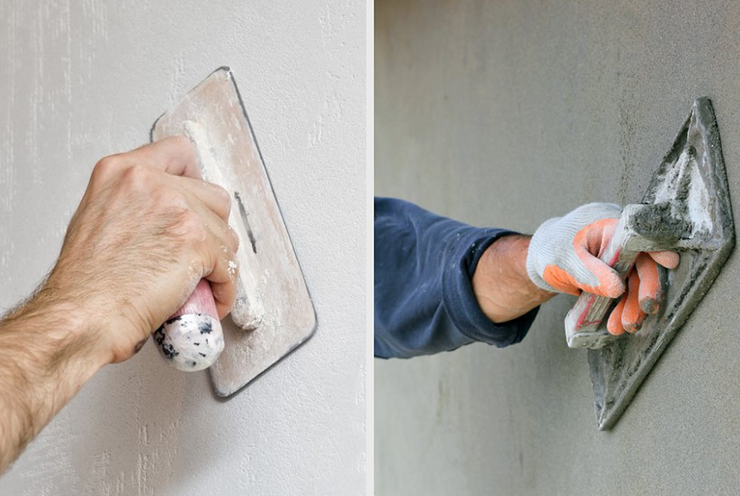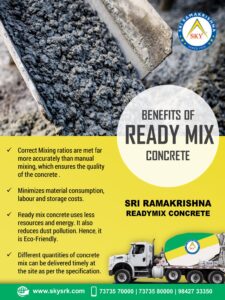Ordinary Portland Cement (OPC) is good for plastering. It provides excellent bonding and smooth finishes.
Plastering requires a cement that offers strong adhesion and durability. OPC is preferred because it sets quickly and offers a high strength bond, making it ideal for both interior and exterior plastering. Its fine particles ensure a smooth finish, which is essential for aesthetic appeal.
Additionally, OPC is widely available and cost-effective, making it a popular choice among builders and homeowners. Ensuring a quality plaster mix is crucial for long-lasting walls, and OPC meets these requirements efficiently. Always choose fresh, high-quality OPC to achieve the best results in your plastering projects.
Introduction To Plastering With Cement
Plastering walls is a crucial part of construction. It ensures smooth surfaces and durability. Cement is the main material used in plastering. Choosing the right cement can make a big difference. This guide will help you understand the best cement for plastering.
The Role Of Cement In Plastering
Cement acts as a binder in plastering. It holds the sand and water together. This mixture creates a strong and smooth layer on walls. The quality of cement affects the plaster’s strength and finish.
There are different types of cement available. Each type has its own properties. The right choice ensures the plaster is durable and looks good.
Importance Of Selecting The Right Cement
Choosing the right cement is vital for a successful plastering job. The wrong cement can lead to cracks and poor finishes. It can also affect the durability of the walls.
Here are some factors to consider:
- Setting time: How quickly the cement sets.
- Strength: The final strength of the plaster.
- Workability: How easy it is to mix and apply.
Below is a table showing different types of cement and their key features:
| Type of Cement | Setting Time | Strength | Workability |
|---|---|---|---|
| Ordinary Portland Cement (OPC) | Quick | High | Moderate |
| Portland Pozzolana Cement (PPC) | Moderate | High | High |
| White Cement | Quick | Low | High |
Ordinary Portland Cement (OPC) is popular for its quick setting time and high strength. Portland Pozzolana Cement (PPC) is known for its good workability and durability. White Cement is mainly used for decorative finishes.
Understanding these features helps in selecting the right cement. This ensures a strong and smooth plaster finish.
Credit: www.quora.com
Types Of Cement Used In Construction
Cement is a key material in construction. Different types of cement are used for various purposes. Understanding the types of cement can help you choose the right one for your project.
Ordinary Portland Cement (opc)
Ordinary Portland Cement (OPC) is the most common type of cement used in construction. It is made from a mixture of limestone and clay. This cement is known for its strength and durability. It is available in three grades: 33, 43, and 53. Each grade indicates the strength of the cement.
| Grade | Compressive Strength (MPa) | Common Uses |
|---|---|---|
| 33 Grade | 33 MPa | General construction work |
| 43 Grade | 43 MPa | Plastering, flooring |
| 53 Grade | 53 MPa | High-strength structures |
OPC is used for plastering, masonry work, and concrete. It sets quickly and provides high strength. This makes it ideal for fast-paced construction projects.
Portland Pozzolana Cement (ppc)
Portland Pozzolana Cement (PPC) is made by blending OPC with pozzolanic materials. These materials include fly ash, volcanic ash, and silica fumes. PPC is known for its resistance to chemical attacks. It offers better workability and finishing.
PPC is suitable for plastering, masonry work, and marine structures. It takes longer to set but provides better durability. This makes it ideal for structures exposed to water and chemicals.
| Property | OPC | PPC |
|---|---|---|
| Setting Time | Quick | Slow |
| Durability | Good | Better |
| Workability | Standard | Improved |
| Resistance to Chemicals | Moderate | High |
Choosing the right cement is essential for the success of your construction project. Both OPC and PPC have their unique advantages. Consider the specific needs of your project to make an informed decision.
Assessing Cement Quality For Plastering
Choosing the right cement for plastering is crucial for achieving a durable and smooth finish. Understanding the quality of cement helps in making an informed decision. This section provides an in-depth analysis of the key parameters to consider.
Fineness And Strength
Fineness of cement affects the quality of the plaster. Finer cement particles provide a smoother finish and better bonding.
Strength is another critical factor. Cement with high strength ensures the plaster can withstand wear and tear.
| Factor | Description |
|---|---|
| Fineness | Finer particles lead to smoother finishes and better bonding. |
| Strength | High strength ensures durability and resistance to damage. |
Setting Time And Durability
Setting time of cement is crucial for the plastering process. Quick-setting cement allows for faster work completion. However, it should not set too quickly to avoid cracks.
Durability is essential for long-lasting plaster. Cement that offers high durability ensures the plaster remains intact for years.
- Quick-setting cement: Speeds up construction but should not set too fast.
- Durable cement: Ensures longevity and resistance to environmental factors.

Credit: m.youtube.com
Best Cement Picks For Plastering
Choosing the right cement for plastering is crucial. It ensures durability, smoothness, and resistance to cracks. This section will guide you through the best cement picks for plastering.
Top Brands And Their Products
Several brands dominate the cement market. They offer high-quality products suitable for plastering. Here are some top picks:
- UltraTech Cement: Known for its high strength and smooth finish. Ideal for both interior and exterior plastering.
- ACC Cement: Provides excellent workability. Ensures a crack-free and durable plaster.
- Ambuja Cement: Renowned for its superior bonding. Ensures a long-lasting and smooth surface.
- Shree Cement: Offers good consistency and workability. Suitable for all types of plastering work.
- JK Lakshmi Cement: Known for its high compressive strength. Provides a smooth and even finish.
Comparative Analysis Of Cement Types
Choosing the right type of cement is equally important. Here is a comparative analysis of different cement types:
| Cement Type | Strength | Workability | Best For |
|---|---|---|---|
| Ordinary Portland Cement (OPC) | High | Moderate | Exterior plastering |
| Portland Pozzolana Cement (PPC) | Moderate | High | Interior plastering |
| White Cement | Moderate | High | Decorative plastering |
Use OPC for areas that need high strength. PPC is best for smooth finishes and interior walls. White cement is ideal for decorative purposes.
Factors To Consider When Choosing Cement
Choosing the right cement for plastering is crucial for a durable and smooth finish. Several factors influence the selection of cement. Below are essential factors to consider when choosing cement for plastering.
Climate And Environmental Conditions
The climate and environmental conditions play a significant role in cement selection. In areas with high humidity, cement with low permeability is essential. This helps prevent moisture from penetrating the plaster.
For regions with extreme temperatures, consider cement with high thermal resistance. This ensures the plaster remains intact despite temperature fluctuations. In coastal areas, use cement that can withstand saltwater exposure. This prevents deterioration over time.
Surface And Structural Requirements
The type of surface and structural requirements are critical when choosing cement. For smooth surfaces, use cement with fine particles. This ensures an even and smooth finish.
For rough surfaces, opt for cement with higher adhesive properties. This helps the plaster adhere better and prevents cracks. If the structure requires additional strength, choose cement with high compressive strength.
Below is a table summarizing the key points:
| Factor | Recommendation |
|---|---|
| High Humidity | Low Permeability Cement |
| Extreme Temperatures | High Thermal Resistance Cement |
| Coastal Areas | Saltwater Resistant Cement |
| Smooth Surfaces | Fine Particle Cement |
| Rough Surfaces | High Adhesive Properties Cement |
| Structural Strength | High Compressive Strength Cement |
Choosing the right cement ensures the longevity and durability of your plastering work.
Mixing And Application Tips
Plastering is an essential step in construction. It enhances the durability and appearance of walls. To achieve the best results, proper mixing and application of cement are crucial. Here are some tips for mixing and applying cement effectively.
Proper Ratios For Mixing
The right cement-sand ratio ensures a strong bond and smooth finish. The standard ratio is 1 part cement to 4 parts sand. For a finer finish, use a 1:3 ratio.
Use clean water for mixing. The water-cement ratio should be 0.4 to 0.6. This ensures the mixture is neither too dry nor too wet.
Here’s a simple table for easy reference:
| Type of Plaster | Cement-Sand Ratio | Water-Cement Ratio |
|---|---|---|
| Coarse Plaster | 1:4 | 0.4 – 0.6 |
| Fine Plaster | 1:3 | 0.4 – 0.6 |
Techniques For Smooth Application
Applying plaster smoothly requires skill and the right techniques. Begin by cleaning the wall surface. Remove any dust, dirt, or loose particles.
Next, wet the wall lightly. This helps in better adhesion of the plaster. Apply the mixture in thin, even layers. Start from the bottom and work your way up.
Use a trowel for spreading the plaster. Move it in a circular motion to ensure even application. For a smoother finish, use a wooden float. This helps in leveling the plaster.
After applying, let the plaster set for 24 hours. Keep the surface damp during this period to prevent cracks.
Here’s a quick list to summarize the techniques:
- Clean the wall surface
- Wet the wall lightly
- Apply thin, even layers
- Use a trowel in a circular motion
- Level with a wooden float
- Keep the surface damp for 24 hours
Common Plastering Mistakes To Avoid
Plastering is a crucial step in construction projects. It ensures smooth and durable walls. Making mistakes during plastering can lead to poor results. Knowing common plastering mistakes helps achieve a perfect finish.
Incorrect Cement-to-sand Ratio
The cement-to-sand ratio is vital for a strong plaster mix. An incorrect ratio weakens the plaster. This can cause cracks and poor adhesion.
Here is a simple table to understand the common ratios:
| Type of Plaster | Cement-to-Sand Ratio |
|---|---|
| Internal Plaster | 1:6 |
| External Plaster | 1:4 |
Always measure the materials accurately. Use the recommended ratio for the type of plaster. This ensures a strong and durable finish.
Inadequate Curing Practices
Curing is the process of keeping the plaster moist after application. This helps it set properly. Inadequate curing can lead to weak plaster and cracks.
Here are some tips for proper curing:
- Keep the plaster moist for at least 7 days.
- Use water spray to dampen the plaster.
- Cover the plastered surface with wet burlap or plastic sheets.
Proper curing ensures the plaster gains strength. It also prevents shrinkage cracks.
Maintenance And Repair Of Plastered Surfaces
Maintaining plastered surfaces is vital for their longevity and appearance. Proper care ensures that your walls remain smooth and attractive. Let’s explore some tips for keeping your plastered surfaces in top condition.
Routine Checks And Cleaning
Conducting regular checks on plastered surfaces is essential. Look for cracks, damp spots, and other signs of wear. Addressing these issues early can prevent further damage.
Cleaning plastered surfaces should be done with care. Use a soft brush or cloth to remove dust. For tougher stains, a mild detergent and water solution works best. Avoid using harsh chemicals, as they can damage the plaster.
| Action | Frequency |
|---|---|
| Inspect for cracks | Monthly |
| Dust surfaces | Weekly |
| Clean stains | As needed |
Repairing Cracks And Damage
Cracks in plastered surfaces can occur due to various reasons. These include structural movement and temperature changes. Repairing these cracks promptly is crucial to maintain the integrity of the plaster.
Follow these steps to repair cracks:
- Clean the crack thoroughly to remove dust and debris.
- Apply a suitable filler or plaster mix into the crack.
- Allow the filler to dry completely.
- Sand the repaired area to achieve a smooth finish.
- Repaint the surface if necessary.
For larger damages, it might be best to consult a professional. They can ensure the repair is done correctly and lasts longer.
Routine maintenance and timely repairs can extend the life of your plastered surfaces. This ensures they remain beautiful and functional for years to come.
Conclusion And Final Recommendations
Choosing the right cement for plastering ensures a smooth, durable finish. The right choice leads to fewer repairs and a better-looking wall. Let’s recap the top cement choices and provide final thoughts on quality plastering.
Recap Of Ideal Cement Choices
Here are the top choices for plastering cement:
| Cement Type | Features |
|---|---|
| Ordinary Portland Cement (OPC) | High strength, quick setting |
| Portland Pozzolana Cement (PPC) | Durable, resistant to cracks |
| White Cement | Ideal for decorative plastering |
OPC offers quick setting times and is very strong. PPC is known for its durability and resistance to cracks. White Cement is best for decorative finishes.
Final Thoughts On Quality Plastering
Quality plastering starts with the right cement choice. Use OPC for high strength walls. For longer-lasting plaster, PPC is the best choice. For decorative finishes, go with White Cement.
Mix the cement properly. Follow the guidelines for water and sand ratios. Ensure the surface is clean before plastering. This helps the plaster stick well.
Using the right cement and proper techniques guarantees a smooth, durable, and beautiful finish.

Credit: www.hipcouch.com
What is the Best Cement to Use for Plastering in a 100 Sq Ft Area?
The best cement quantity for plaster in a 100 sq ft area would depend on the type of plaster you are using. For traditional plastering, a ratio of 1:3 (cement to sand) is commonly recommended. For modern gypsum or lime plaster, a specific product may require a different ratio.
Frequently Asked Questions
Which Cement Brand Is Best For Plastering?
UltraTech, ACC, and Ambuja are top cement brands for plastering. They provide superior quality and durability. Choose based on local availability.
What Is The Best Cement Mix For Plastering?
The best cement mix for plastering is a 1:4 ratio of cement to sand. Use fine sand for a smooth finish. Ensure the mix is lump-free and consistent.
Is Ultratech Cement Best For Plastering?
Yes, UltraTech cement is excellent for plastering. It provides a smooth finish, strong bonding, and durability. Many professionals recommend it.
Can You Use Cement For Plastering?
Yes, cement can be used for plastering. It creates a strong, durable surface suitable for interior and exterior walls.
Conclusion
Selecting the right cement for plastering is crucial for durability and finish. Prioritize quality and compatibility with your project needs. Always consult experts and trusted brands for the best results. Remember, good plastering ensures long-lasting and aesthetically pleasing walls. Choose wisely to enhance the longevity and beauty of your construction.
{ “@context”: “https://schema.org”, “@type”: “FAQPage”, “mainEntity”: [ { “@type”: “Question”, “name”: “Which cement brand is best for plastering?”, “acceptedAnswer”: { “@type”: “Answer”, “text”: “UltraTech, ACC, and Ambuja are top cement brands for plastering. They provide superior quality and durability. Choose based on local availability.” } } , { “@type”: “Question”, “name”: “What is the best cement mix for plastering?”, “acceptedAnswer”: { “@type”: “Answer”, “text”: “The best cement mix for plastering is a 1:4 ratio of cement to sand. Use fine sand for a smooth finish. Ensure the mix is lump-free and consistent.” } } , { “@type”: “Question”, “name”: “Is UltraTech cement best for plastering?”, “acceptedAnswer”: { “@type”: “Answer”, “text”: “Yes, UltraTech cement is excellent for plastering. It provides a smooth finish, strong bonding, and durability. Many professionals recommend it.” } } , { “@type”: “Question”, “name”: “Can you use cement for plastering?”, “acceptedAnswer”: { “@type”: “Answer”, “text”: “Yes, cement can be used for plastering. It creates a strong, durable surface suitable for interior and exterior walls.” } } ] }






